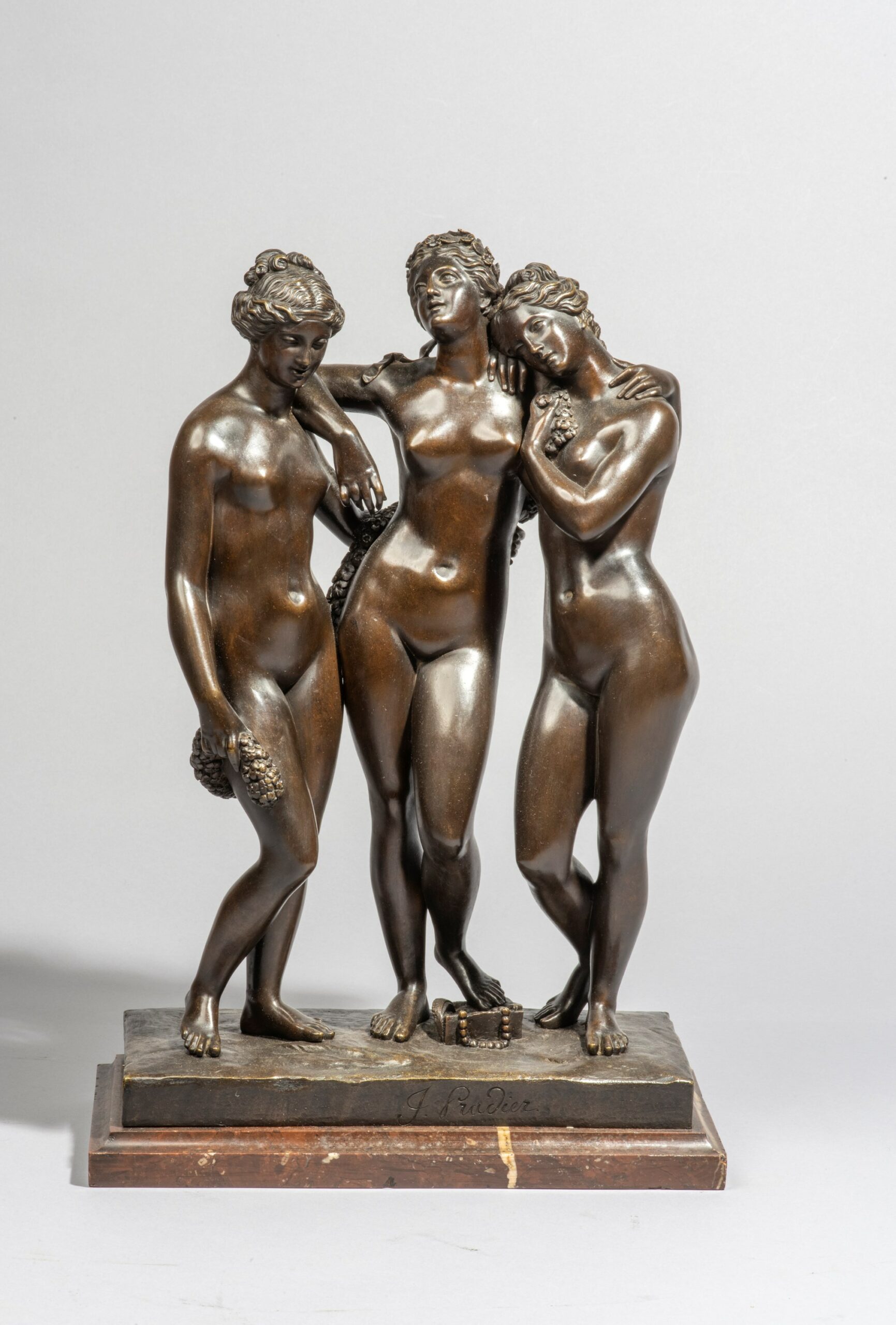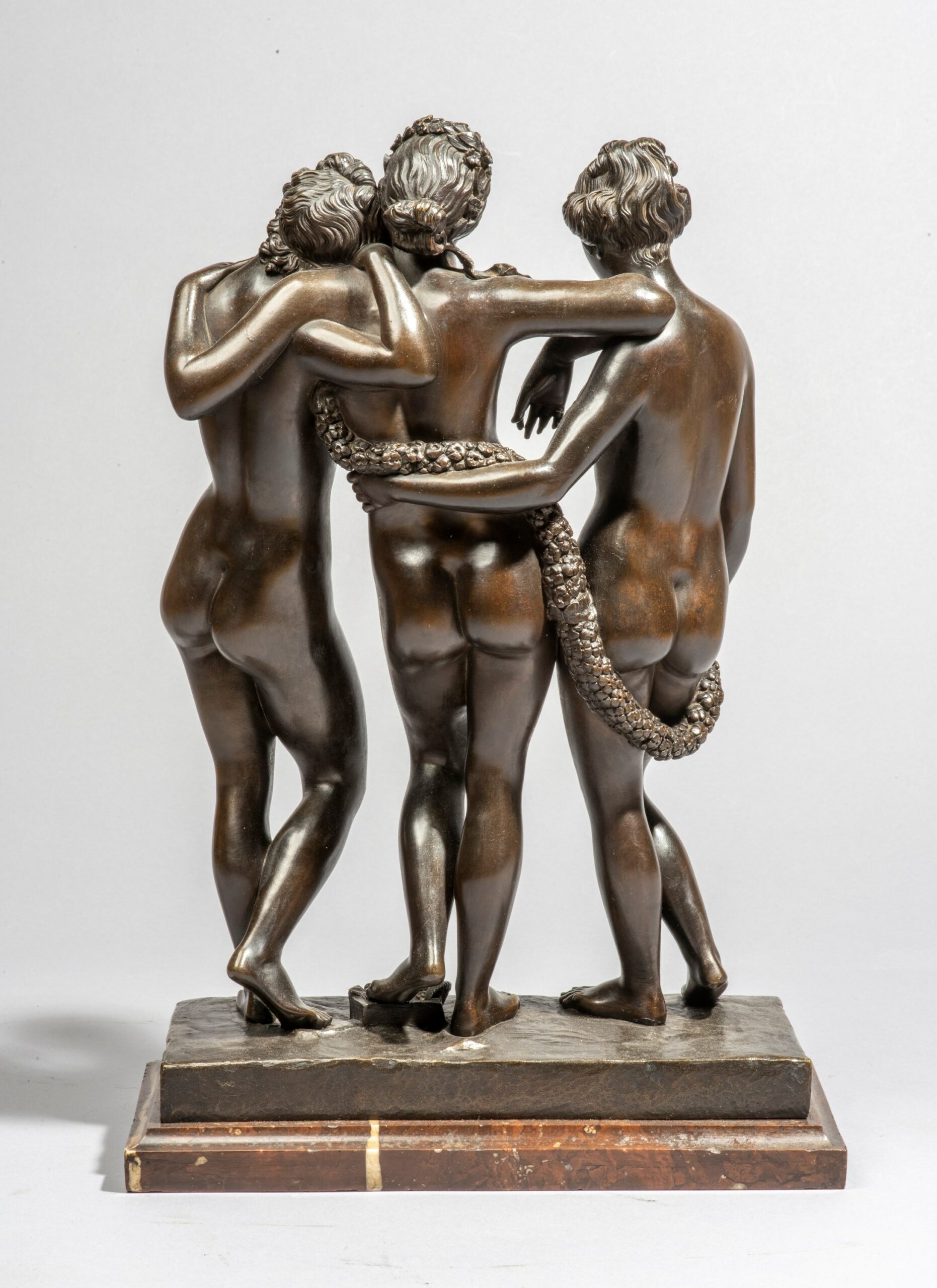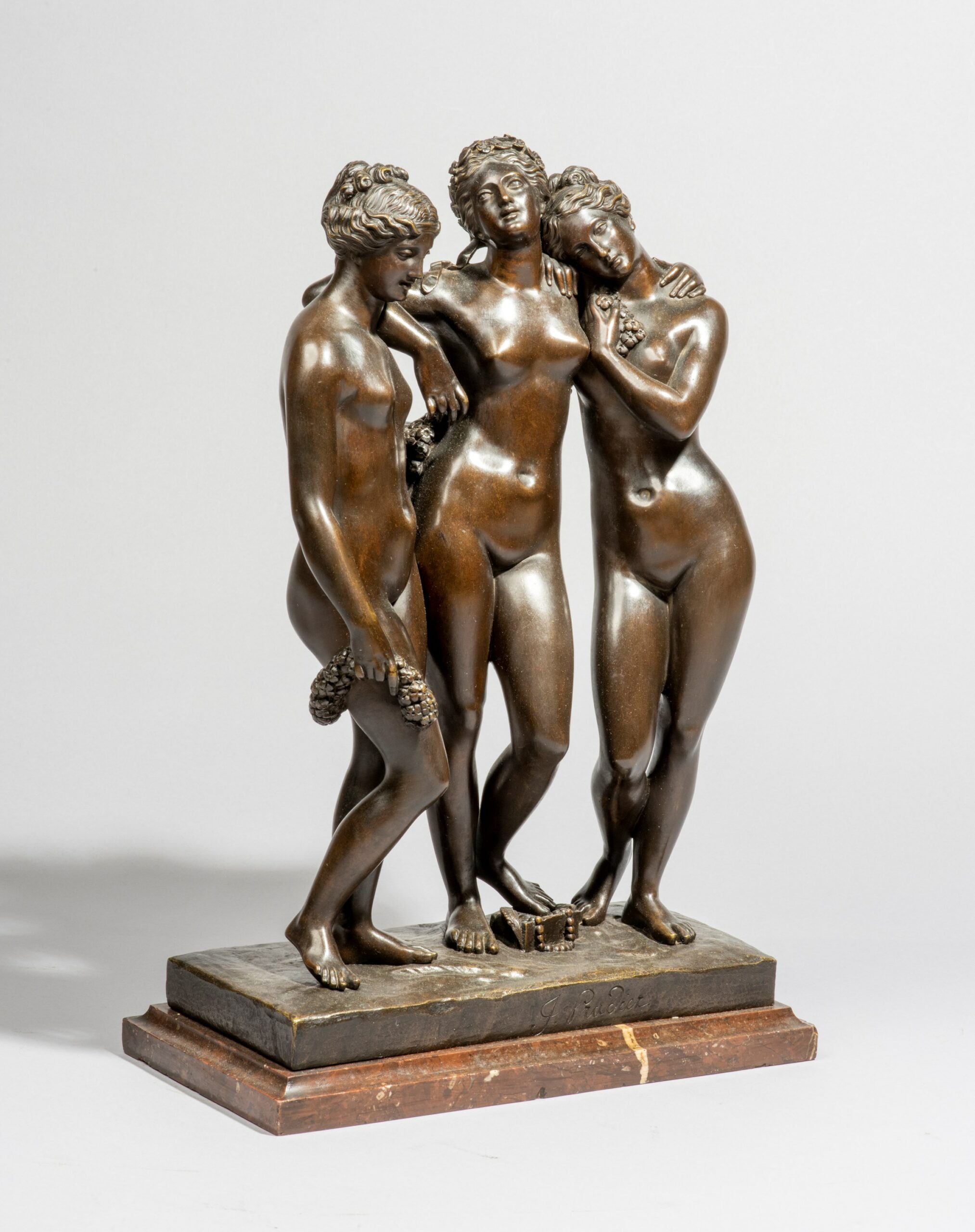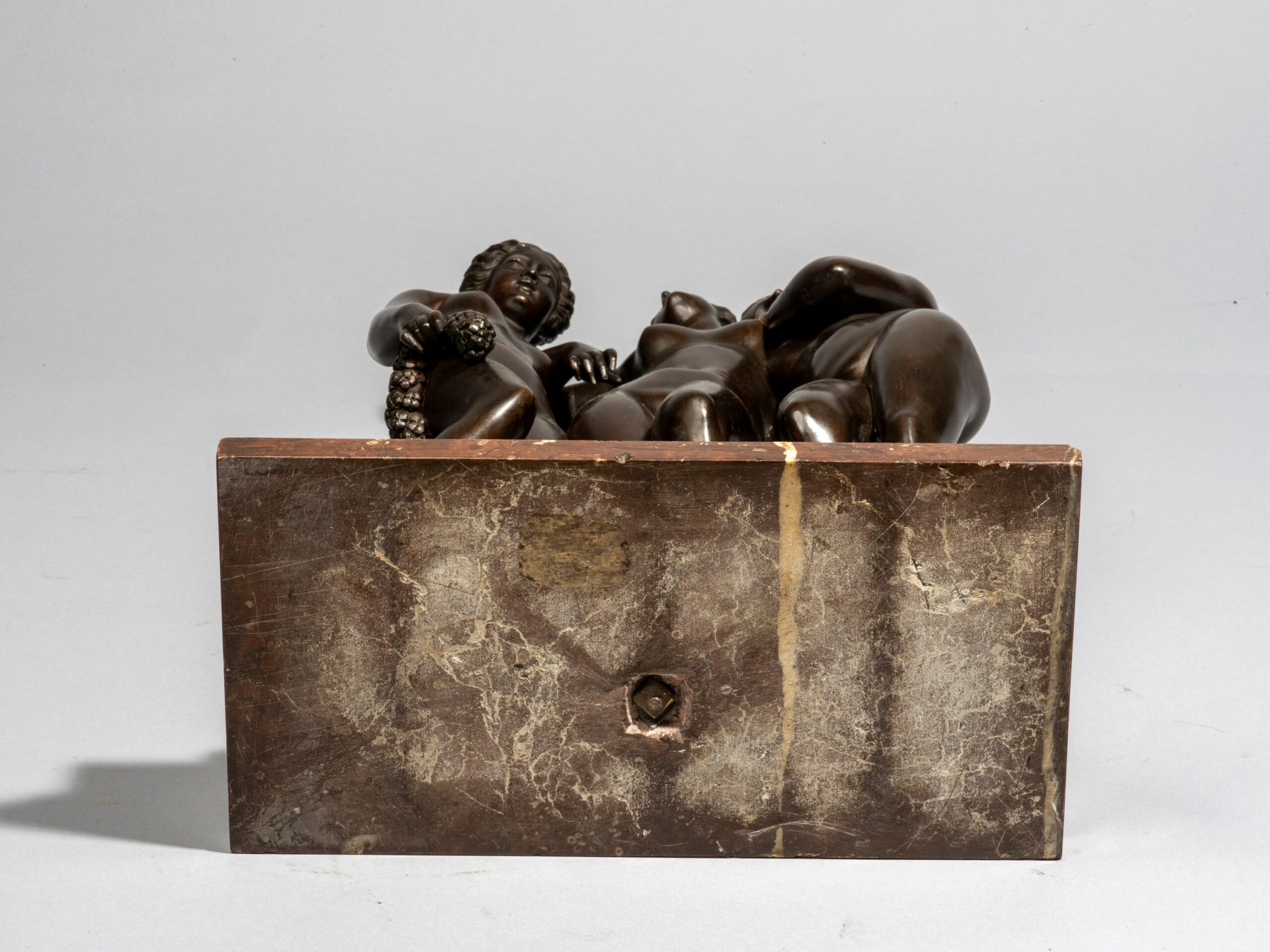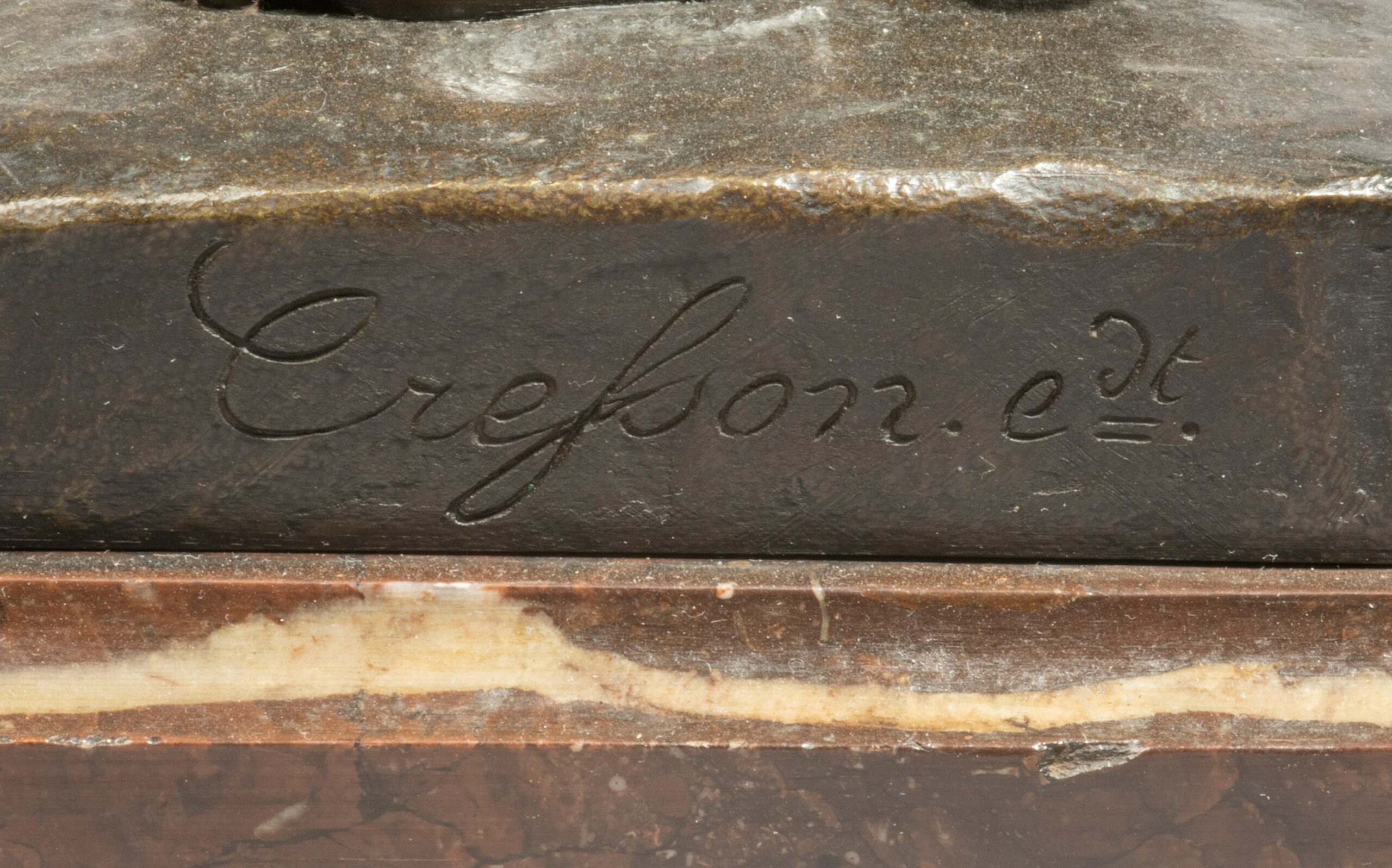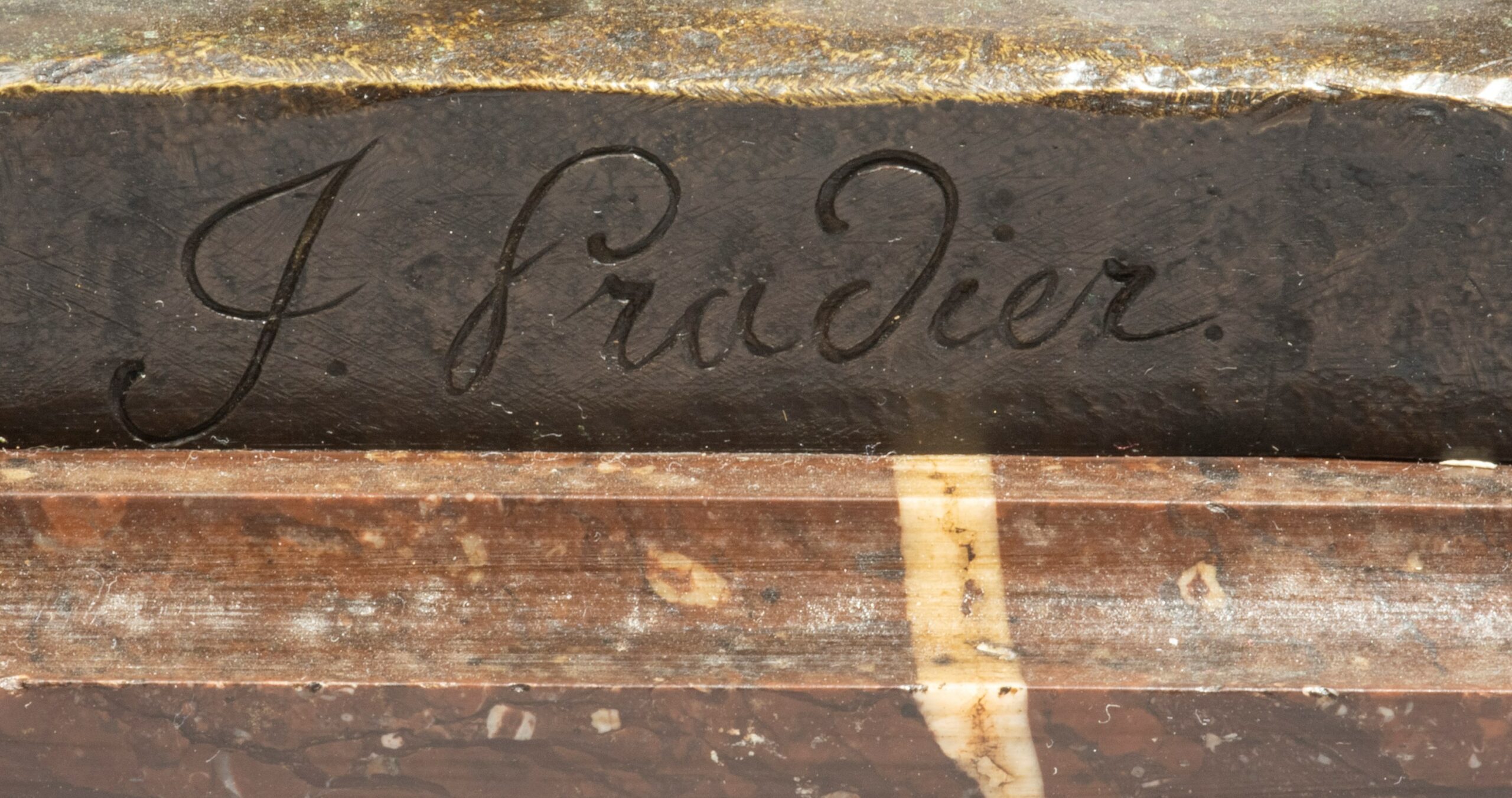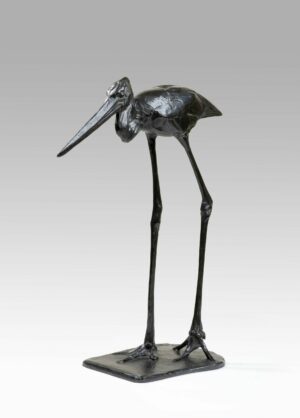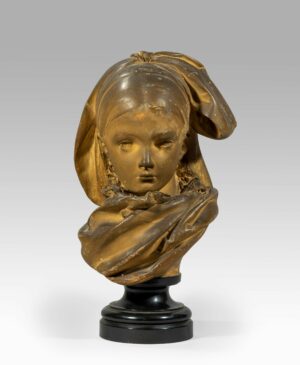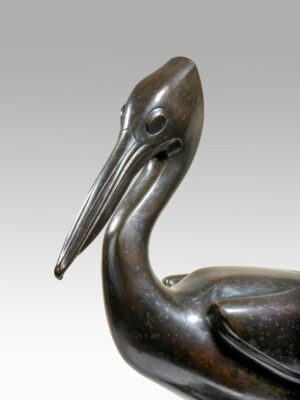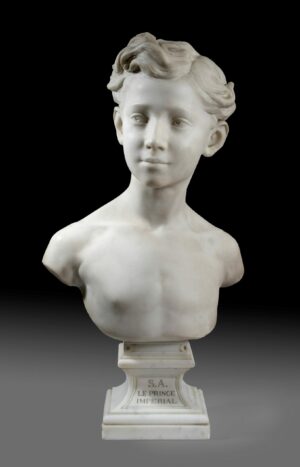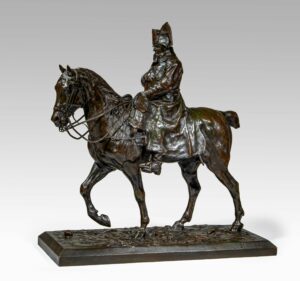Description
The Three Grace group, completed in April 1825, was not presented in marble (height: 67,7″- 172cm) until the 1831 Salon des Artistes Français et Indépendants where it was acquired by the ministry of the King’s Household, 27 September 1831. Held by the Musée National du Château de Versailles until May 1928, it entered the Louvre’s collections in 1928. It truly established the sculptor’s reputation, and in 1833 the critics referred to him as one of’ the two most skilful masters we have today, David and Pradier’ (Gustave Planche).
Hellenistic sculpture represents the Graces, goddess of beauty, naked, standing, holding each other by the arms, the central figure with its back to the viewer. Pradier followed the layout which was that of Canova, with all graces facing in the same direction. The bronze reductions bring out some simplifications compared to the marble version, as is the case with our sculpture, which does not have the background pedestal visible in the original composition. One of the statuettes is described by Jules Janin (Quoted above, 1839, page 309) Eyma/Lucy claimed that The Three Graces group, ‘reduced in a small proportion’ were passed from moulder to moulder (Quoted above, 1840, page 338). Another bronze copy has also been inventoried, Les trois Grâces et l’Amour (Height: 15,1″ (38,5 cm), attributed to Pradier on which Cupid is brandishing a torch (C. Lapaire, Op. cit. above, n° 498, reproduced p. 432.). Pradier did indeed entrust the edition of most of his statues, some of his statuettes and the reductions of some of his big models to several moulders and founders, and more particularly to Susse. The artist had assigned all his rights, without limiting their exploitation in time. Concerning Cresson, Bernard Metman notes in his alphabetical directory of bronze publishers: ‘CRESSON. Had an art bronze shop on the corner of the passage des Variétés, around 1848’ and also mentions that he ‘signed a small bronze, Negro with calabashes by Pradier’. Several models of Pradier’s statuettes edited by Cresson are known.
Listed as early as 1840 (Almanach du commerce de Paris, 1841), Cresson ceased his activity and sold his business on June 24, 1856.

